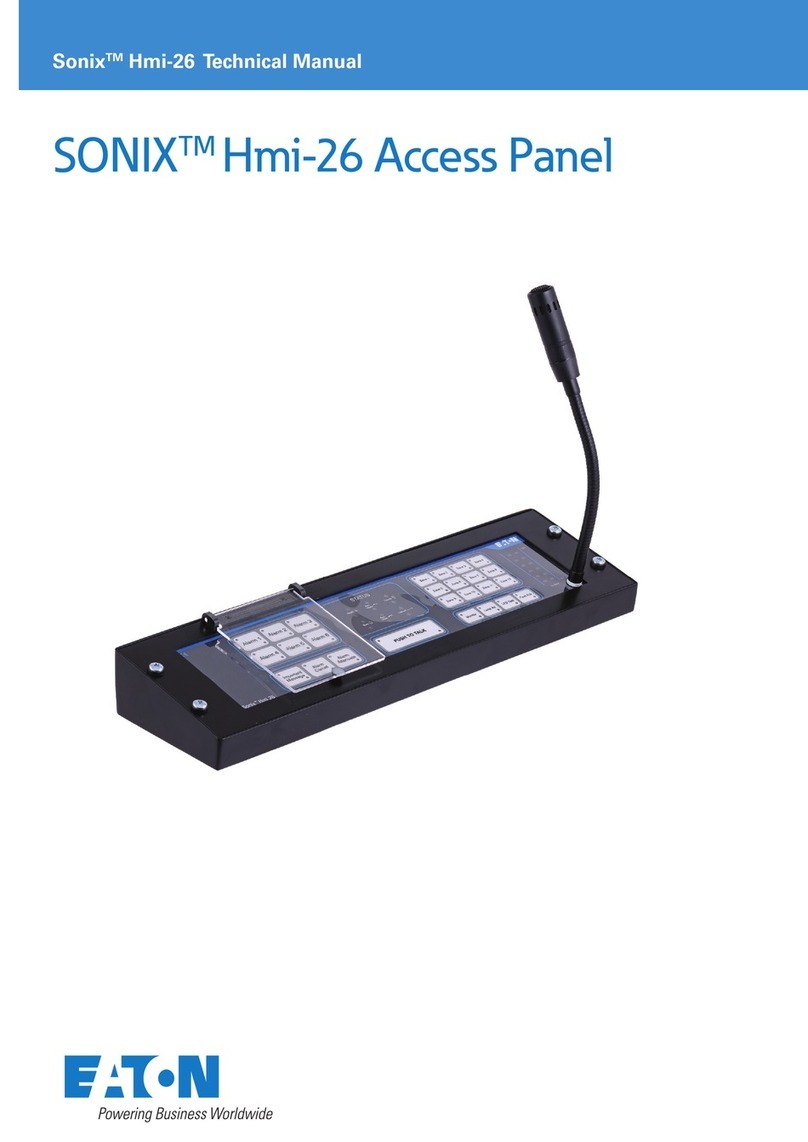
Sonix Hmi-5 Technical Manual
7
SONIX HMI-5 TECHNICAL MANUAL TM373 / A June 2022 www.eaton.com
1 Introduction
These instructions are intended for all users who have
to install, commission, congure and setup the Sonix
Hmi-5 Ex access panel. For this, the manual is action-
oriented and explains how to achieve a certain objective
on a step-by-step basis. It is assumed that you have
necessary electrical, electronic and telecommunications
experience to undertake the work. If in doubt, please
consult your Eaton representative.
1.1 Eaton quality assurance
Eaton design, manufacture, install and commissions all
our products to the highest standards of quality. This
quality process is embraced and adopted throughout the
group in all areas of our operations. This is demonstrated
by our compliance and strict adherence to ISO 9001,
14001, ATEX, IECEX policies. On receipt of the
product, ensure that the cartons are undamaged and
that the contents are all correct and complete. Should
this product reach you in an unsatisfactory condition
please report this to Eaton to enable us to rectify and
investigate the fault in a speedy manner.
1.2 Packaging
In the interest of preserving the environment, Eaton aims
to use recycled packaging wherever practical. Due to the
physical nature of our products, we provide adequate
packaging to protect the goods during transit. Please
ensure that once unpacked, checked and installed that
all packaging is disposed / recycled in a responsible
manner.
1.3 ESD (Electro Static Discharge)
The Sonix PA/GA system is largely constructed from
electronic printed circuit boards. These printed circuit
boards are sensitive to static electricity, ESD discharge
on to any of the Eaton products could cause permanent
and irreparable damage to the equipment. All such
PCB’s are shipped to you in ESD protective bags for
transit. Prior to opening the transit bags please ensure
that you are wearing either an ESD, earthed wrist strap
or other suitable means of protection.
1.4 Safe working practice
Whilst working on or within the Sonix PA/GA system it
is our prime interest that you remain safe throughout.
During this work you will be exposed to potentially
hazardous voltages, currents, confined spaces and
potentially industrial environments.
Prior to undertaking any work please ensure relevant
permits and regulations are adhered to.
1.5 Required tools / equipment.
To install and commission this part you will need the
following tools.
• Flat-blade terminal screw driver
• Large PH1 screw driver
• Multi-meter
• 4 off mounting screws, M6 or equivalent
1.6 In the box
This item is shipped with the following items.
• 1 x Hmi-5 access panel
• 1 x Product Manual
1.7 Recommended spares
This item is sold as a complete module therefore, no
spares are necessary.




























